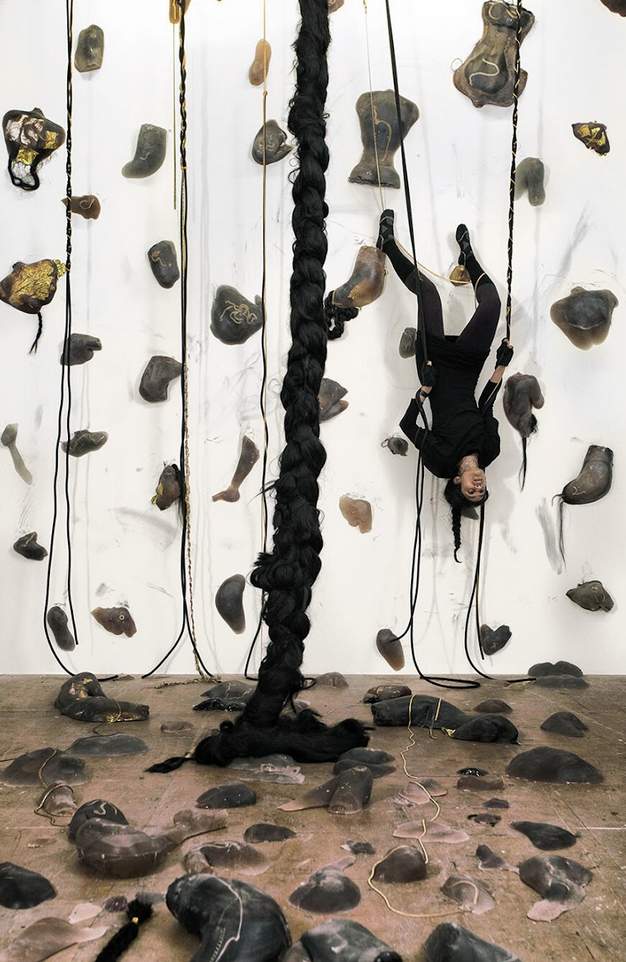New York-based artist Baseera Khan’s exhibition at the Brooklyn Museum, I Am An Archive, features their hair and body as a recurring motif. This alludes to the traditional belief that Muslim women’s hair and bodies are seen as sacred sites of collective memories. In their pieces, Muslim women’s bodies and hair carry within them a rich commentary on Muslim life both in the past and present. Khan delves into a spectrum of issues impacting Muslim women in society, addressing themes such as Islamophobia, the challenges of assimilation and adaptation, as well as a deep sense of cultural pride.
Their pieces become a space for dialogue between empowering traditional beliefs among these women and orientalist notions that view their bodies as highly sexualized and politicized. Khan’s work thus reflects the United Nations Sustainable Development Goal of Gender Equality and Quality Education.
One of the exhibition’s seminal pieces is Braidrage, a multi-media piece that they began working on in 2017. In the Brooklyn Museum’s gallery, the piece is showcased as a single long thick braid that appears to be human hair, hanging from the ceiling and pooling on the floor. The braid is accompanied by a large projection of the piece’s performance, in which Khan draws by using unconventional methods to ensure that every part of their body is involved in their artistic process.
They do so by creating a rock climbing wall where climbing holds have been cast from the shapes of their body parts, embedded with bits of their own hair. Before climbing, they apply charcoal on their hands, feet and face using the Wudu gesture— a cleansing ritual Muslims perform before prayer — and proceeds to draw with their body by climbing up and down the wall. The charcoal residue leaves visible marks, allowing them to impactfully utilize their body to draw.

Khan only considers the piece finished once they have completely exhausted themselves and cannot continue climbing the wall. The piece is, quite literally, tied together by Khan’s hair and body as a Muslim woman. The piece acts as an allegory to the significance of her body as a Muslim woman, a way to navigate the world, a way to create and a way to leave a lasting mark on history.
Khan has also created a series of photographs titled Law of Antiquities to dive deeper into how their body carries authentic stories within them. In the photographs, Khan uses practical and digital effects to collage her body with objects held in the Brooklyn Museum’s Arts of the Islamic World collection. She contextualizes Islamic artifacts such as prayer rugs, mosque lamps and Turkish crescents with her body, her gaze always in direct dialogue with both the artifacts and the viewer.
As Frieze points out, these photographs connect the museum’s Islamic artifacts with Khan. In doing so, they have framed the artifacts in a contemporary context. They remind viewers of the similarities and differences between Muslim people, as well as their histories.
The artifacts, while historic, differ significantly from the contemporary experiences of Muslim people. Unlike these remnants of the past, Muslims live in the present, actively experiencing the impacts of Westernization, including challenges like Islamophobia and the effects of occupation in the Middle East. These ordeals are not relics of the past, but ongoing, lived realities.
Muslim voices, especially Muslim women’s voices, are often marginalized and misrepresented in today’s world. Baseera Khan’s pieces help showcase their identities and histories. Khan’s bold pieces redefine what it means to be Muslim in America, reclaiming their representation and asserting their agency in a society that often seeks to diminish, or even erase their presence.
